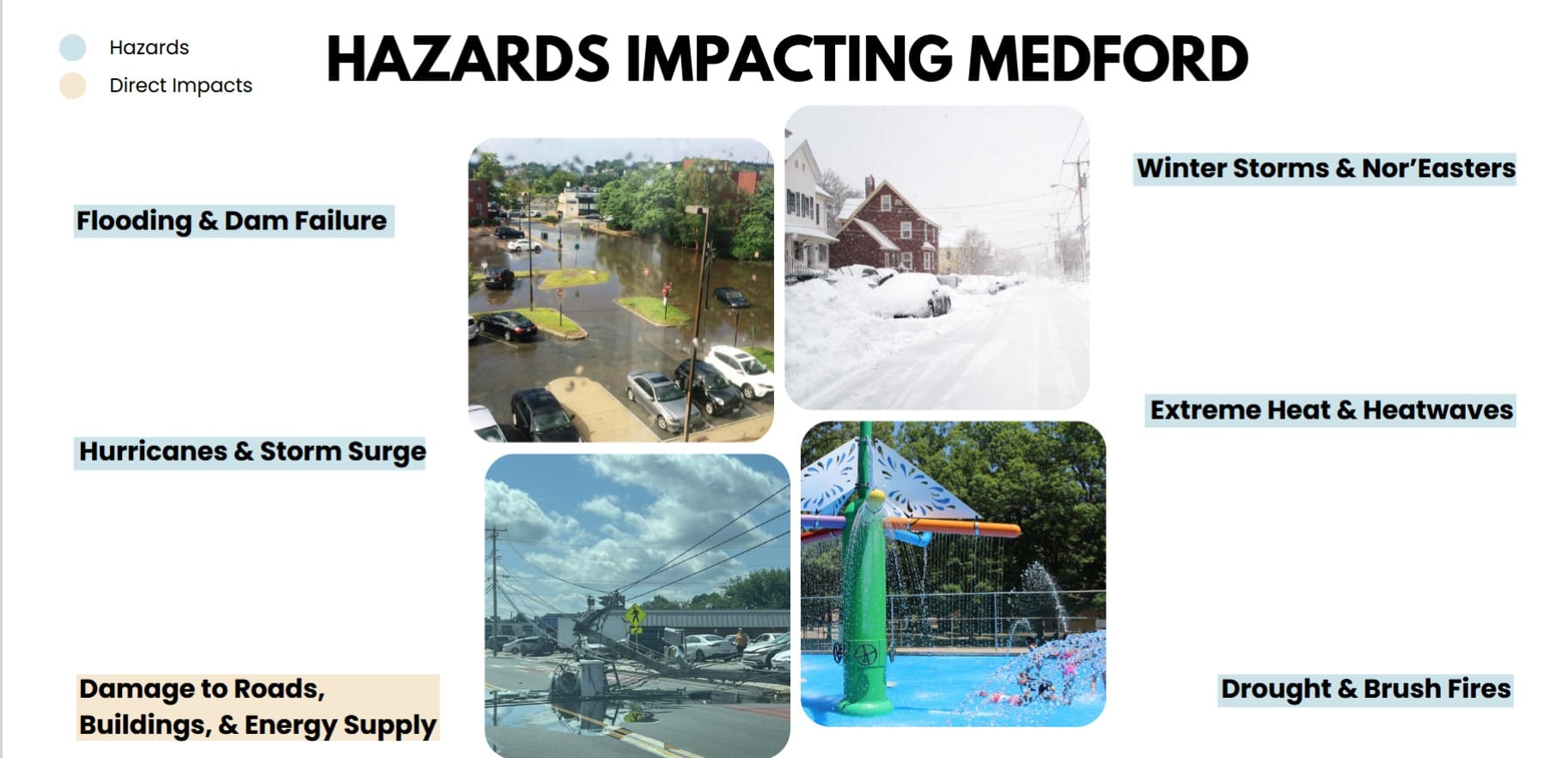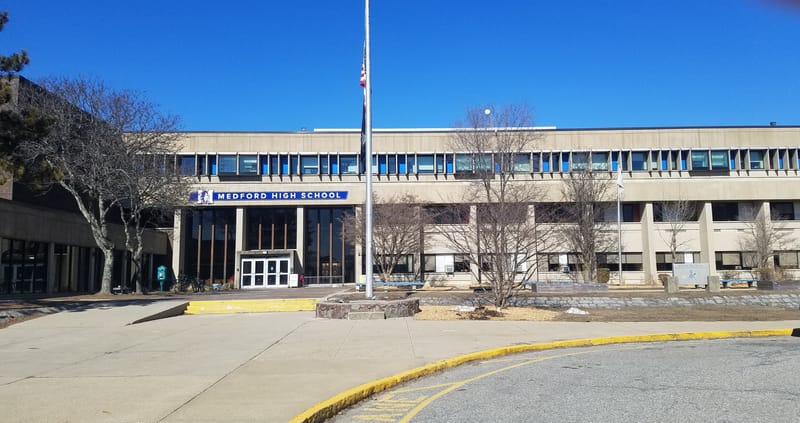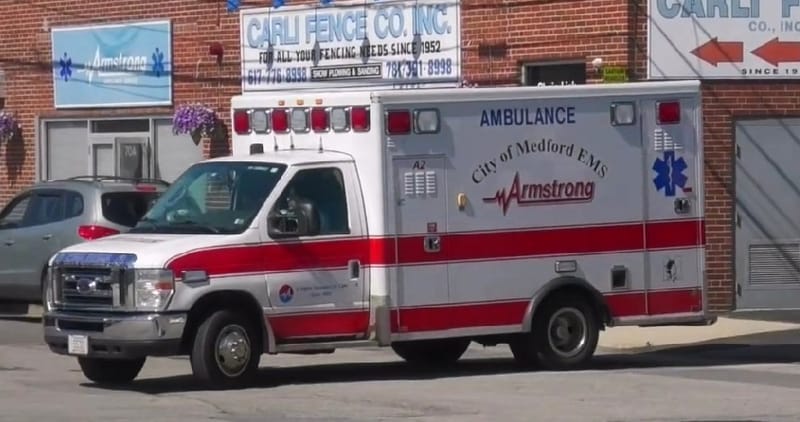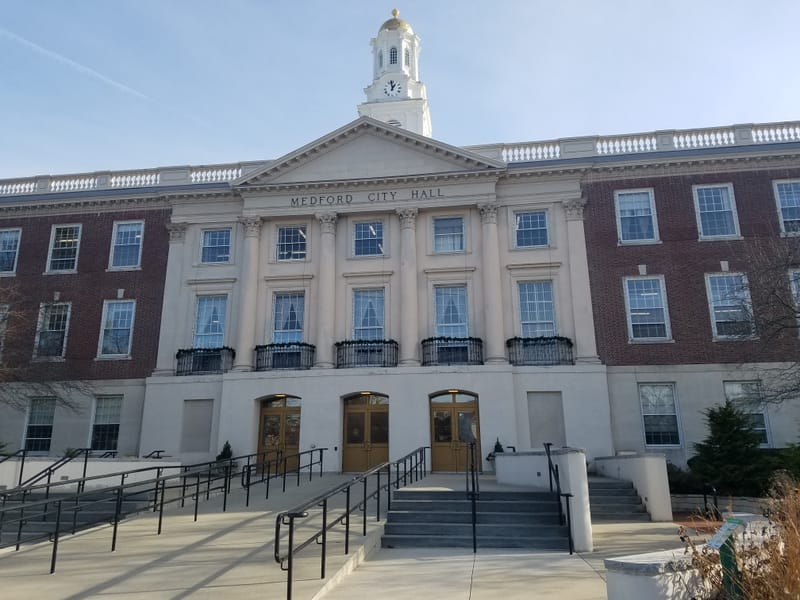Medford updating Hazard Mitigation Plan to address long-term disaster issues
Medford is in the middle of formulating a Hazard Mitigation Plan, which the Federal Emergency Management Agency (FEMA) requires be updated every five years.
By Neil Zolot
Medford is in the middle of formulating a Hazard Mitigation Plan, which the Federal Emergency Management Agency (FEMA) requires be updated every five years to stay current with risks and new data and to qualify for federal disaster aid.
“Hazard Mitigation Planning (HMP) aims to reduce loss of life and property, breaking the cycle of disaster damage and reconstruction. HMP achieves this by first identifying risks and vulnerabilities, then developing long-term protective strategies against these risks and vulnerabilities,” the city website Hazard Mitigation Plan Update Public Meeting 1 Meeting Presentation reads.
“It’s something we’re required to do to mitigate damage and develop strategies,” Health Director and Emergency Manager MaryAnn O’Connor explained.
The process has included a series of informational public forums, a survey, and focus groups initiated after the first informational meeting in January. An update was provided June 30, and another meeting is scheduled for October.
Eventually a plan will be submitted to the City Council and require approval by state and federal authorities.
“The input has been really helpful,” O’Connor said. “It’s now a matter of putting together a plan.”
Top points heard from community groups were the following:
• Emergency communication and preparedness gaps indicate residents, especially those with language barriers, disabilities, or limited digital access, struggle to access timely and clear emergency information. There have been calls for multilingual communication, better outreach and more coordinated preparedness efforts.
• Aging infrastructure, especially drainage, heating and transit, combine with limited financial resources and weak support networks to increase resident vulnerability during floods, storms, and heat events. There is a need for community-centered resilient strategies. The community wants to see greater investment in local support systems, resilient infrastructure, including a tree canopy, and neighborhood-based solutions.
Discussions in focus groups yielded the same concerns, including residents not receiving timely updates about pending events or receiving information after the fact. There were also some additional concerns such as those about "heat islands" resulting from Medford’s lack of a tree canopy. As might be expected, there are more trees in residential neighborhoods and fewer in business centers.
Predictably, coastal flooding is more prevalent in sections of the city along the Mystic River and Mystic Lakes, and low-lying areas are more subject to ponding after rainstorms, which in recent years have dropped significant rain in short periods of time.
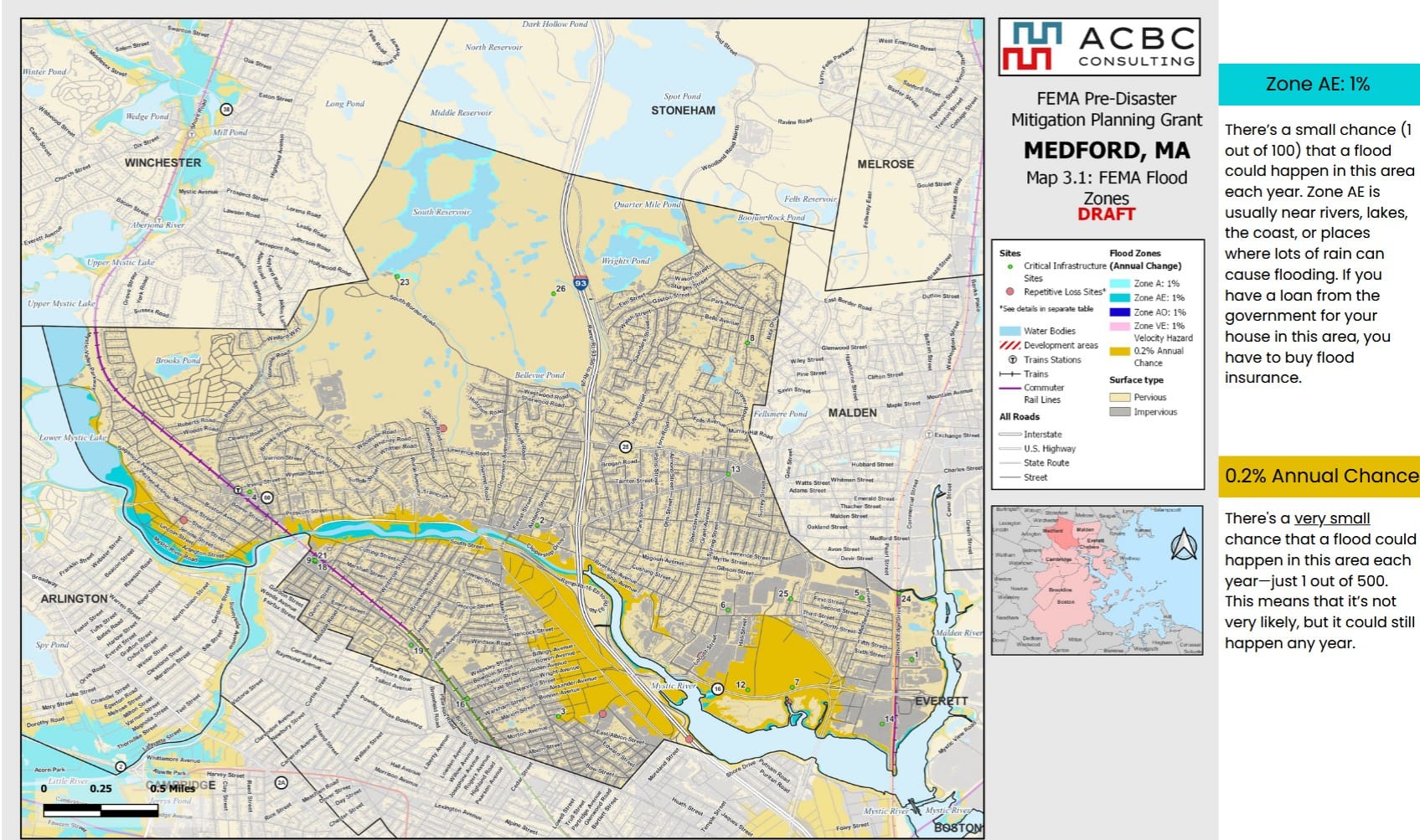
Metropolitan Area Planning Council Planner Sam Cleaves doesn’t know why Medford’s plan wasn’t updated earlier, but climate change has made the need for hazard mitigation plans more acute.
“Precipitation events in general are getting more intense,” Cleaves said in 2019. “The air temperature is warmer and there is more capacity to hold more moisture. Heavy rains tend to overwhelm older infrastructure.”
What’s next?
As a result of resident participation, O’Connor and consultants Andreanne Breton-Carbonneau and Klara Tanta-Quidgeon have formed a list of goals and strategies based on geological and meteorological hazards, mitigation, infrastructure and assets, buildings and grounds, and use of regional and state resources.
The list includes better and multilingual communication, identifying heat islands, and maintaining and updating the infrastructure, including regular work on the drainage system.
“We’re already doing a lot of this, but there’s always room for improvement,” O’Connor said. “Plans exist, but the idea is to do things better or more often.”
As always and as with everything, funding is an issue, but compliance with the FEMA regulations opens up the possibilities of aid.
“One use of the plan is to secure grants,” Director of Planning, Development and Sustainability Alicia Hunt said during the June 30 forum. “This will help us with funding opportunities.”
There are some limits on grants, however. The Massachusetts Emergency Management Agency (MEMA’s) website cautions, “FEMA’s Hazard Mitigation Assistance Programs are not intended as funding for repair, replacement or deferred maintenance activities, but are designed to assist sub-applicants in implementing long-term, cost-effective improvements that will reduce, minimize or eliminate risk to people and property from the effects of natural hazards. Projects that address operation, deferred or future maintenance, repairs or replacement (without a change in the level of protection provided) of existing structures, facilities, or infrastructure (dredging, debris removal, replacement of obsolete utility systems, bridges and facility repair) are not eligible.”
Almost no one tuned in to the June 30 video-conference, but O’Connor still feels things are going well, in part based on responses to the January meeting.
“We’re in a good place to get this done,” she said.

